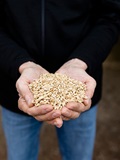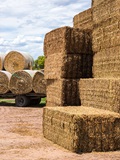Central SA
20 May 2020
| Date | C SA 23 | C SA 22 | C SA 5YA |
|---|---|---|---|
| 06-Jan-23 | 328 | 200 | 235 |
| 13-Jan-23 | 333 | 200 | 237 |
| 20-Jan-23 | 338 | 210 | 243 |
| 27-Jan-23 | 348 | 210 | 240 |
| 03-Feb-23 | 353 | 210 | 239 |
| 10-Feb-23 | 358 | 210 | 241 |
| 17-Feb-23 | 361 | 210 | 244 |
| 24-Feb-23 | 363 | 210 | 246 |
| 03-Mar-23 | 368 | 210 | 241 |
| 10-Mar-23 | 368 | 210 | 236 |
| 17-Mar-23 | 366 | 215 | 237 |
| 24-Mar-23 | 363 | 215 | 237 |
| 31-Mar-23 | 363 | 210 | 236 |
| 07-Apr-23 | 363 | 210 | 238 |
| 14-Apr-23 | 364 | 210 | 245 |
| 21-Apr-23 | 365 | 210 | 245 |
| 28-Apr-23 | 365 | 210 | 230 |
| 05-May-23 | 365 | 210 | 231 |
| 12-May-23 | 363 | 210 | 232 |
| 19-May-23 | 360 | 210 | 232 |
| 26-May-23 | 358 | 205 | 232 |
| 02-Jun-23 | 358 | 210 | 233 |
| 09-Jun-23 | 348 | 210 | 238 |
| 16-Jun-23 | 347 | 210 | 244 |
| 23-Jun-23 | 345 | 210 | 245 |
| 30-Jun-23 | 340 | 210 | 245 |
| 07-Jul-23 | 335 | 210 | 245 |
| 14-Jul-23 | 333 | 218 | 261 |
| 21-Jul-23 | 330 | 225 | 262 |
| 28-Jul-23 | 330 | 225 | 266 |
| 04-Aug-23 | 320 | 225 | 274 |
| 11-Aug-23 | 320 | 225 | 279 |
| 18-Aug-23 | 318 | 225 | 295 |
| 25-Aug-23 | 315 | 225 | 295 |
| 01-Sep-23 | 315 | 228 | 302 |
| 08-Sep-23 | 228 | 312 | |
| 15-Sep-23 | 228 | 303 | |
| 22-Sep-23 | 228 | 291 | |
| 29-Sep-23 | 228 | 263 | |
| 06-Oct-23 | 228 | 246 | |
| 13-Oct-23 | 228 | 241 | |
| 20-Oct-23 | 228 | 242 | |
| 27-Oct-23 | 228 | 244 | |
| 03-Nov-23 | 228 | 244 | |
| 10-Nov-23 | 228 | 246 | |
| 17-Nov-23 | 250 | 246 | |
| 24-Nov-23 | 290 | 254 | |
| 01-Dec-23 | 295 | 259 | |
| 08-Dec-23 | 300 | 262 | |
| 15-Dec-23 | 305 | 260 | |
| 22-Dec-23 | 315 | 266 | |
| 29-Dec-23 | 324 | 272 |
Notes:
Change in price is the change since the last report. Hay quoted is sourced and delivered locally, GST exclusive unless stated otherwise. It should be noted that local prices quoted may not be the cheapest available, sourcing it from another region may be more affordable, and buyers are encouraged to evaluate all options. Prices are indicative to a mid-range shedded product, and based on the best indication of market value at the time of reporting. It should be noted there is a wide variation in quality of hay, prices for a mid-range product will not reflect the weighted average of trade. Prices will naturally vary based on the product quantity and quality, buyer/seller relationship and the size of the trade.The hay report has been commissioned by Dairy Australia to provide an independent and timely assessment of hay markets in each dairy region. This report is created using data provided by the Australian Fodder Industry Association (AFIA). It should be remembered that actual prices may vary for quality or other reasons. Whilst all reasonable steps have been taken to ensure the accuracy of the information contained in this report, Dairy Australia disclaims all liability to the fullest extent permitted by Australian law for any inadvertent errors and for any losses or damages stemming from reliance upon its content. Dairy Australia recommends all persons seek independent advice and, where appropriate, advice from a qualified advisor before making any decisions about changes to business strategy.
Commentary
- Good rains have now fallen across most of the region with 40mm of rain falling steadily, with many growers considering the season break has finally arrived. The heavier soils have remained wet for the wet which has caused some access issues for cropping and fodder deliveries.
- The majority of seeding had been undertaken dry by many growers with estimates that 95% of the region’s crops have been dry seeded. It has been estimated that 75% of overall crop seeding has been completed. Only grain producers in very heavy dry areas had to wait until rains to seed.
- Currently diesel is being sold locally for $1.90 per litre for bulk deliveries to farm. It is expected that this could increase further over the coming months. Fuel levies and increased prices for local deliveries are expected to remain a feature. Hay prices will need to rise to reflect the increasing costs of inputs and commodity prices for alternative crops.
- Demand for fodder has been rising through the region as farmers continue to utilise supplementary feed whilst pasture growth is impacted.
- Pricing remains variable due to remaining stocks of low-quality older hay from 2-3 seasons ago.
- Demand is increasing as supply shortages become well known.
- Cereal hay: +$5 ($170 to $250/t). Prices rose as supply is short.
- Lucerne hay: +/-0 ($390 to $420/t). Prices remain steady this week for high protein hay.
- Straw: +/-0 ($90 to $150/t). Prices remain steady but supply is short.
- Please note: Unless stated otherwise, prices are per tonne, sourced and delivered locally. The price range indicated is for feeds of varying quality with the price range generally indicative of quality of feed. We recommend feed testing and viewing of fodder before purchase to be sure of the quality of feed.

